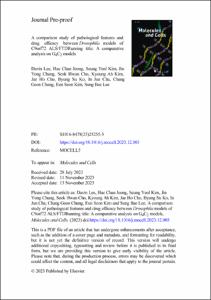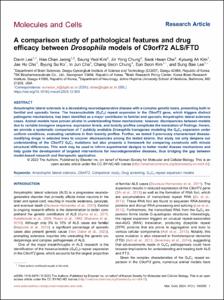Full metadata record
| DC Field | Value | Language |
|---|---|---|
| dc.contributor.author | Lee, Davin | - |
| dc.contributor.author | Jeong, Hae Chan | - |
| dc.contributor.author | Kim, Seung Yeol | - |
| dc.contributor.author | Chung, Jin Yong | - |
| dc.contributor.author | Cho, Seok Hwan | - |
| dc.contributor.author | Kim, Kyoung Ah | - |
| dc.contributor.author | Cho, Jae Ho | - |
| dc.contributor.author | Ko, Byung Su | - |
| dc.contributor.author | Cha, In Jun | - |
| dc.contributor.author | Chung, Chang Geon | - |
| dc.contributor.author | Kim, Eun Seon | - |
| dc.contributor.author | Lee, Sung Bae | - |
| dc.date.accessioned | 2023-12-27T14:10:13Z | - |
| dc.date.available | 2023-12-27T14:10:13Z | - |
| dc.date.created | 2023-12-26 | - |
| dc.date.issued | 2024-01 | - |
| dc.identifier.issn | 1016-8478 | - |
| dc.identifier.uri | http://hdl.handle.net/20.500.11750/47496 | - |
| dc.description.abstract | Amyotrophic lateral sclerosis (ALS) is a devastating neurodegenerative disease with a complex genetic basis, presenting both in familial and sporadic forms. The hexanucleotide (G4C2) repeat expansion in the C9orf72 gene, which triggers distinct pathogenic mechanisms, has been identified as a major contributor to familial and sporadic ALS cases. Animal models have proven pivotal in understanding these mechanisms; however, discrepancies between models due to variable transgene sequence, expression levels, and toxicity profiles complicate the translation of findings. Herein, we provide a systematic comparison of seven publicly available Drosophila transgenes modeling the G4C2 expansion under uniform conditions, evaluating variations in their toxicity profiles. Further, we tested three previously characterized disease modifying drugs in selected lines to uncover discrepancies among the tested strains. Our study not only deepens our understanding of the C9orf72 G4C2 mutations but also presents a framework for comparing constructs with minute structural differences. This work may be used to inform experimental designs to better model disease mechanisms and help guide the development of targeted interventions for neurodegenerative diseases, thus bridging the gap between model-based research and therapeutic application. © 2023 The Authors. Published by Elsevier Inc. on behalf of Korean Society for Molecular and Cellular Biology. | - |
| dc.language | English | - |
| dc.publisher | Elsevier | - |
| dc.title | A comparison study of pathological features and drug efficacy between Drosophila models of C9orf72 ALS/FTD | - |
| dc.type | Article | - |
| dc.identifier.doi | 10.1016/j.mocell.2023.12.003 | - |
| dc.identifier.scopusid | 2-s2.0-85185715287 | - |
| dc.identifier.bibliographicCitation | Molecules and Cells, v.47, no.1, pp.100005 | - |
| dc.description.isOpenAccess | TRUE | - |
| dc.subject.keywordAuthor | G4C2 repeat expansion models | - |
| dc.subject.keywordAuthor | Amyotrophic lateral sclerosis | - |
| dc.subject.keywordAuthor | C9orf72 | - |
| dc.subject.keywordAuthor | Comparison study | - |
| dc.subject.keywordAuthor | Drug screening | - |
| dc.subject.keywordPlus | AMYOTROPHIC-LATERAL-SCLEROSIS | - |
| dc.subject.keywordPlus | RNA FOCI | - |
| dc.subject.keywordPlus | HEXANUCLEOTIDE REPEAT | - |
| dc.subject.keywordPlus | PROTEINS | - |
| dc.subject.keywordPlus | EXPANSION | - |
| dc.subject.keywordPlus | GENE | - |
| dc.subject.keywordPlus | NEURODEGENERATION | - |
| dc.subject.keywordPlus | TRANSLATION | - |
| dc.subject.keywordPlus | MUTATIONS | - |
| dc.subject.keywordPlus | DISEASE | - |
| dc.citation.number | 1 | - |
| dc.citation.startPage | 100005 | - |
| dc.citation.title | Molecules and Cells | - |
| dc.citation.volume | 47 | - |
- Appears in Collections:
- Department of Brain Sciences Laboratory of Neurodegenerative Diseases and Aging 1. Journal Articles





